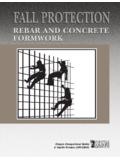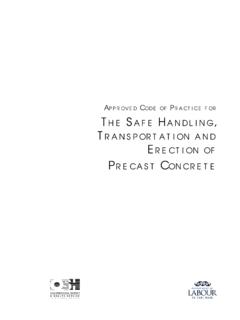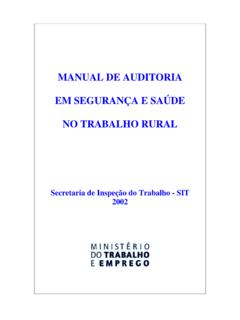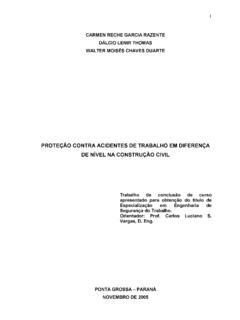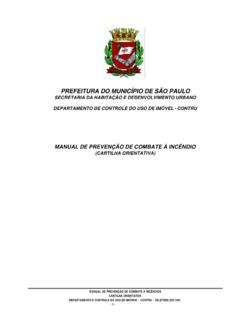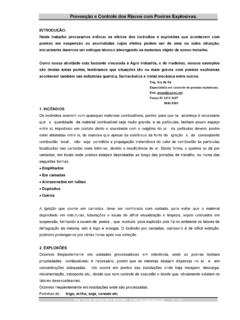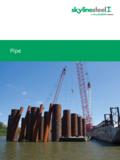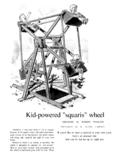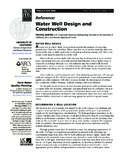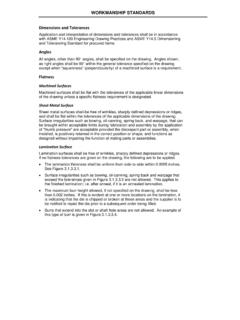Transcription of Excavation and shafts for foundations ACOP
1 HEALTH AND SAFETY IN EMPLOYMENT ACT 1992 ISSUED AND APPROVED BY THE MINISTEROF LABOURSEPTEMBER 1995 APPROVED CODE OF PRACTICE FOR SAFETY INEXCAVATIONAND shafts FORFOUNDATIONSOCCUPATIONAL SAFETY & HEALTH SERVICELABOURDEPARTMENT OFTE TARI MAHIP ublished by the Occupational Safety and Health ServiceDepartment of LabourWellingtonNew ZealandSeptember 1995 ISBN 0-477-03578-7$10 ( )CONTENTSFOREWORD .. 6 SUMMARY OF THE HEALTH AND SAFETY INEMPLOYMENT ACT AND REGULATIONS .. 7 Regulations 7 Approved codes of practice7 Employers duties 7 Hazard management8 Information for employees9 Employers to involve employees in the development of health and safetyprocedures 9 Training of employees9 Safety of people who are not employees9 Employees and self-employed persons duties9 Accidents and serious harm (Recording and notification)10 Notifiable works10 INTRODUCTION .. 112. GLOSSARY OF TERMS .. 123. SCOPE .. 14 PART ONE: TRENCHES AND OPEN excavations .. 154. GENERAL SAFETY PROVISIONS.
2 Legal Modes of General Other safety Blasting 235. RECOMMENDED SAFE PRACTICES FOREXCAVATIONS .. Before During excavation256. METHODS OF Protection and support Safety considerations: Do s and Don Trenching: Safety check list 334 SAFETY IN Excavation AND shafts FOR FOUNDATIONS7. OPEN excavations .. General Protection and support Safety considerations 36 PART TWO: shafts AND DRIVES FORFOUNDATIONS .. 379. SCOPE .. 3810. GENERAL .. Safety in shafts and drives shafts and drives associated with mines, quarries or tunnels Methods of support Site investigation4011. PRECAUTIONS DURING CONSTRUCTION OFDRILLED LARGE-DIAMETER shafts FOR PILING ANDOTHER PURPOSES .. General Surface equipment and Lining through water-bearing and unstable Collapse of Descent into unlined shafts Provision of loose safety lining and other protection Emergency Safety First aid kit4412. VENTILATION, GAS HAZARDS, SYMPTOMS ANDEFFECTS.
3 Checking air quality Presence of gas in shafts46 APPENDIX: THE BUILDING ACT AND REGULATIONS . 48 Building consent requirements 48 Building Act 1991 48 Building Regulations48 Acceptable solutions49 Other conditions imposed by Territorial Authorities 49 BIBLIOGRAPHY .. 50 SAFETY IN Excavation AND shafts FOR foundations 5 NOTICE OF ISSUEI have issued this Approved Code of Practice for Safety in Excavation and Shaftsfor foundations , being a statement of preferred work practices or arrangementsfor the purpose of ensuring the health and safety of persons to which this codeapplies and persons who may be affected by the activities covered by this M. ChetwinSecretary of LabourSeptember 19956 SAFETY IN Excavation AND shafts FOR FOUNDATIONSFOREWORDI have approved this statement of preferred work practices, which is an ApprovedCode of Practice for Safety in Excavation and shafts for foundations , undersection 20 of the Health and Safety in Employment Act 1992.
4 When a code isapproved, a Court may have regard to it in relation to compliance with therelevant sections of the Health and Safety in Employment Act. This means that ifan employer in an industry or using a process to which an approved code appliescan show compliance with that code in all matters it covers, a Court may considerthis to be compliance with the provisions of the Act to which the code Doug KiddMinister of LabourSeptember 1995 SAFETY IN Excavation AND shafts FOR foundations 7 SUMMARY OF THE HEALTHAND SAFETY IN EMPLOYMENTACT AND REGULATIONSThe principal object of the Health and Safety in Employment Act 1992 is toprevent harm to employees at work. To do this, it imposes duties on employers,employees, principals and others, and promotes excellent health and safetymanagement by employers. It also provides for the making of regulations andcodes of are promulgated from time to time under the HSE Act. Regulationsmay impose duties on employers, employees, designers, manufacturers, andothers relating to health and safety.
5 These regulations may apply with respect toplaces of work, plant, processes or substances and may have been made to dealwith particular problems that have arisen. Under the Health and Safety inEmployment Regulations 1995, certain construction work is required to be notifiedto the Occupational Safety and Health Service of the Department of CODES OF PRACTICE Approved Codes of Practice are provided for in section 20 of the HSE Act. Theyare statements of preferred work practice or arrangements, and may includeprocedures which could be taken into account when deciding on the practicablesteps to be taken. Compliance with codes of practice is not , they may be used as evidence of good practice in DUTIESE mployers have the most duties to perform to ensure the health and safety ofemployees at have a general duty to take all practicable steps to ensure the safety ofemployees. In particular, they are required to take all practicable steps to: Provide and maintain a safe working environment; Provide and maintain facilities for the safety and health of employees atwork; Ensure that machinery and equipment is safe for employees;8 SAFETY IN Excavation AND shafts FOR foundations Ensure that working arrangements are not hazardous to employees; and Provide procedures to deal with emergencies that may arise whileemployees are at all practicable steps means what is reasonably able to be done toachieve the result in the circumstances, taking into account: The severity of any injury or harm to health that may occur; The degree of risk or probability of that injury or harm occurring; How much is known about the hazard and the ways of eliminating,reducing or controlling it.
6 And The availability, effectiveness and cost of the possible MANAGEMENTE mployers must have an effective method to identify and regularly review hazardsin the place of work (existing, new and potential). They must determine whetherthe identified hazards are significant hazards and require further an accident or harm occurs that requires particulars to be recorded, employersare required to investigate it to determine if it was caused by or arose from asignificant hazard. Significant hazard means a hazard that is an actual or potential cause or sourceof: Serious harm; or Harm (being more than trivial) where the severity of effects on a persondepends (entirely or among other things) on the extent or frequency ofthe person s exposure to the hazard; or Harm that does not usually occur, or usually is not easily detectable, untila significant time after exposure to the the hazard is significant, the HSE Act sets out the steps employers musttake: Where practicable, the hazard must be eliminated.
7 If elimination is not practicable, the hazard must be isolated. If it is impracticable to eliminate or isolate the hazard, the employer mustminimise the likelihood that employees will be harmed by the the hazard has not been eliminated or isolated, employers must, whereappropriate: Ensure that protective equipment is provided, accessible and used; Monitor employees exposure to the hazard; Seek the consent of employees to monitor their health; and With their informed consent, monitor employees IN Excavation AND shafts FOR foundations 9 INFORMATION FOR EMPLOYEESB efore employees begin work, they must be informed by their employer of: Hazards employees may be exposed to while at work; Hazards employees may create which could harm people; How to minimise the likelihood of these hazards becoming a source ofharm to themselves and others; The location of safety equipment; and Emergency should be provided with the results of any health and safetymonitoring.
8 In doing so, the privacy of individual employees must be TO INVOLVE EMPLOYEES IN THEDEVELOPMENT OF HEALTH AND SAFETY PROCEDURESE mployers need to ensure that all employers have the opportunity to be fullyinvolved in the development of procedures for the purpose of identifying andcontrolling significant hazards, or dealing with or reacting to emergencies andimminent OF EMPLOYEESE mployers must ensure employees are either sufficiently experienced to do theirwork safely or are supervised by an experienced person. In addition, employeesmust be adequately trained in the safe use of all plant, objects, substances andprotective clothing and equipment that the employee may be required to use OF PEOPLE WHO ARE NOT EMPLOYEESE mployers also have a general duty towards persons who are not must take all practicable steps to ensure that employees do not harmany other person while at work, including members of the public or visitors to theplace of AND SELF-EMPLOYED PERSONS DUTIESE mployees and self-employed persons have a responsibility for their own healthand safety while at work.
9 They must also ensure that their own actions do notharm anyone , these responsibilities do not detract from the employer s SAFETY IN Excavation AND shafts FOR FOUNDATIONSACCIDENTS AND SERIOUS HARM (RECORDING ANDNOTIFICATION)The HSE Act requires employers to keep a register of work-related accidents andserious harm. This includes every accident that harmed (or might have harmed): Any employee at work; Any person in a place of work under the employer s are also required to investigate all accidents and near-misses todetermine whether they were caused by or arose from a significant are required to notify serious harm that occurs to employees while atwork to the Secretary of Labour (in practice, the nearest OSH office), as soon aspossible. In addition, the accident must also be notified in the form prescribedwithin 7 days. (Suitable forms for notification are available from OSH offices andselected stationers.)If a person suffers serious harm, the scene of the accident must not be disturbedunless to: Save life or prevent suffering; Maintain public access for essential services, electricity, gas; Prevent serious damage or loss of OSH office will advise whether it wishes to investigate the accident and whataction may be taken in the WORKSThe Health and Safety in Employment Regulations 1995 require an employer tonotify the inspector of certain work, deemed to be more than usually dangerous,before it is started.
10 A form for this purpose is available from all OSH that the inspector must be notified of include:(a) Work where workers could fall 5 m or more, excluding work on a two-storied house, or work on a power or telephone line, or work carried outfrom a ladder only, or maintenance or repair work of a minor or routinenature.(b) The erection and use of scaffolds 5 m or more above the ground.(c) Every Excavation which is more than m deep and which is deeperthan it is wide at the top.(d) Any form of tunnel or drive where workers work underground,irrespective of timbering or support.(e) Those excavations where the excavated face is more than 5 m deep andthe batter of the face is steeper than 1 horizontal to 2 vertical.(f) Any construction work where explosives are used or stored.(g) Work such as diving, where construction workers breathe air or any othergas that has been compressed or is under pressure.(h) Any construction work in connection with asbestos fibres.
